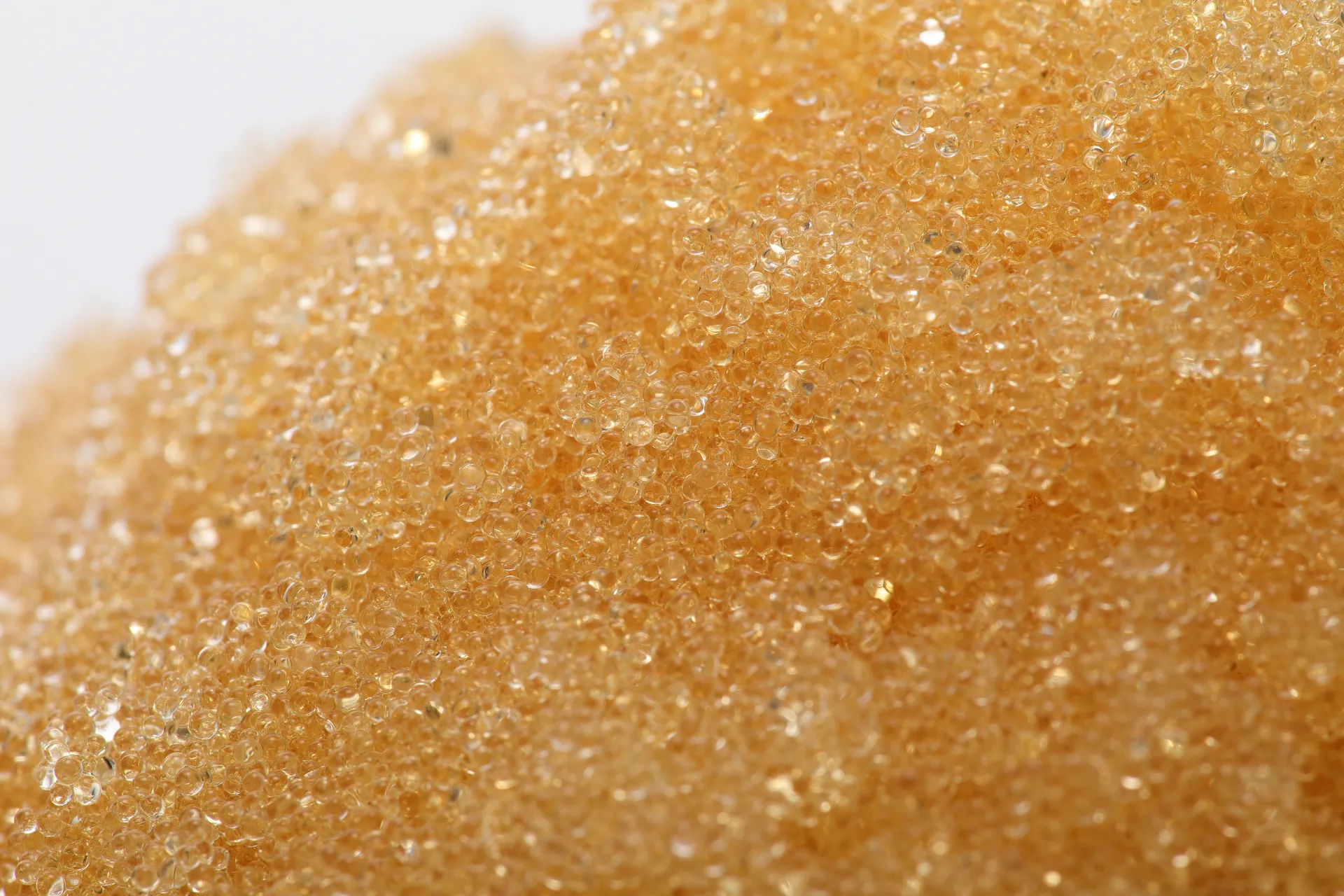A Field Guide to Calcium Exchange Resin for Modern Water Systems
Whenever people ask me how to solve stubborn hardness issues without blowing the salt budget, I end up talking about Calcium Exchange Resin. To be honest, there’s a lot of noise out there. But this category—specifically the Strong Acid Cation (SAC) resins like 001×7 H FC—has become the workhorse for softening, polishing, and even food-grade separations. Below is what I’ve seen in plants, labs, and, frankly, in the trenches.

What it is (and why it works)
001×7 H FC is a gel-type polystyrene–divinylbenzene resin sulfonated to the H⁺ form—think “solid sulfuric acid,” but safe to handle in bead form. In service it swaps H⁺ for Ca²⁺/Mg²⁺ and, after regeneration, it’s ready to do it again. Many customers say it’s surprisingly forgiving with variable raw water—within reason.
Where it’s used
- Boiler make-up softening, industrial RO pretreatment, mixed-bed preloading
- Desalination trains (as front-end hardness guards)
- Food and bio-processing: monosodium glutamate, amino acids, antibiotic extraction
- Electronics rinse and lab deionization (as a cation stage)

Product snapshot: Strong Acid Cation Exchange Resin 001X7H FC
| Parameter | Typical Value (≈) |
|---|---|
| Matrix / Type | Polystyrene-DVB, gel, strong acid (sulfonated) |
| Ionic Form | H⁺ (as shipped) |
| Total Capacity | ≈1.9–2.1 eq/L (H⁺) |
| Moisture Content | ≈45–50% |
| Bead Size | 0.3–1.2 mm (custom gradations available) |
| Service Life | Around 3–5 years, real-world use may vary |
| Operating pH | 0–14 (best capacity stability in 1–12) |
Process flow (how it’s made and validated)
- Bead polymerization (styrene + DVB) → controlled particle sizing.
- Sulfonation with sulfuric acid/oleum → strong acid functional groups.
- Conversion to H⁺ form, rinsing to low conductivity.
- QA/QC testing per ASTM D2187: capacity, moisture, particle uniformity, fines.
- Optional food-contact screening (e.g., FDA 21 CFR 173.25 guidance, NSF/ANSI 61 for potable-water use, if required by project).
Industry trends (quick take)
We’re seeing higher crosslink resins for oxidative stability, tighter bead distributions for lower pressure drop, and, interestingly, plants switching from Na⁺ to H⁺ operation upstream of EDI to shave silica. Regeneration optimization (counter-current, brine reclaim) is the money-saver right now.
Vendor comparison (indicative)
| Vendor/Resin | Capacity (eq/L) | Form | Notes |
|---|---|---|---|
| 001×7 H FC (Hebei, China) | ≈1.9–2.1 | H⁺ | Food/bio extraction friendly; solid-value pricing |
| Amberlite IR120 H | ≈1.8–2.0 | H⁺ | Global availability; tight QC |
| Purolite C100E | ≈2.0 | Na⁺ (often) | Softening staple; easy retrofits |
Values are indicative; consult current datasheets.
Advantages I’ve seen in the field
- High hardness uptake per liter; low leakage when properly regenerated (Calcium Exchange Resin shines here).
- Stable across wide pH; resilient to reasonable oxidant exposure (minimize free chlorine, though).
- Versatile: from boiler rooms to biotech columns.
Customization and integration
Bead size grading, crosslink adjustments, and shipping form (H⁺ vs. Na⁺) can be tailored. For stacked beds (SAC → SBA), I like slightly larger SAC beads to keep pressure drop steady. Skid makers often request pre-rinsed low-TOC batches for pharma-adjacent duty.

Case notes (real-world)
Food amino acids plant, Asia: swapping in Calcium Exchange Resin with tighter bead spec cut differential pressure ≈18% and trimmed acid use 12% after switching to counter-current regen.
Boiler house, EMEA: hardness leakage held
Testing, standards, and certifications
- ASTM D2187 for capacity, moisture, particle integrity.
- NSF/ANSI 61 for potable-water system components (where required).
- FDA 21 CFR 173.25 guidance for ion-exchange resins in food processing contexts.
- Quality management: ISO 9001 frameworks are commonly requested by EPCs.
Practical details
Origin: NO.2 East Jianshe Road, High-Tech Industrial Development South Zone, Wei County, Xingtai, Hebei Province, China. Shipping in lined bags or FIBCs; store cool, wet, sealed. Expect 4,000–10,000 cycles depending on fouling control and regen discipline. And yes, always commission with clean-in-place protocols—your future self will thank you.
References
- ASTM D2187 – Standard Test Methods for Physical and Chemical Properties of Particulate Ion-Exchange Resins.
- NSF/ANSI 61 – Drinking Water System Components – Health Effects.
- FDA 21 CFR 173.25 – Ion-exchange resins, Food Additives Permitted for Direct Addition.
- WHO – Guidelines for Drinking-water Quality, latest edition.
- ISO 9001:2015 – Quality Management Systems – Requirements.
Hebei Lijiang Biotechnology Co., Ltd, is a new material manufacturer specializing in the production of high-performance special ion exchange resins.mixed bed resin suppliers It is a modern high-tech enterprise that integrates the research and development,production, sales, and service of resin materials and resin terminal products.ion exchange resin The company is committed to producing high-quality industrial grade, food grade,pharmaceutical grade, and nuclear grade resins.cation exchange resin It has passed ISO9001 management certification,SGS certification, and WQA international certification from the American Water Quality Association, and has obtained a national food hygiene license. Food grade resin products comply with FDA standards in the United States.super blog